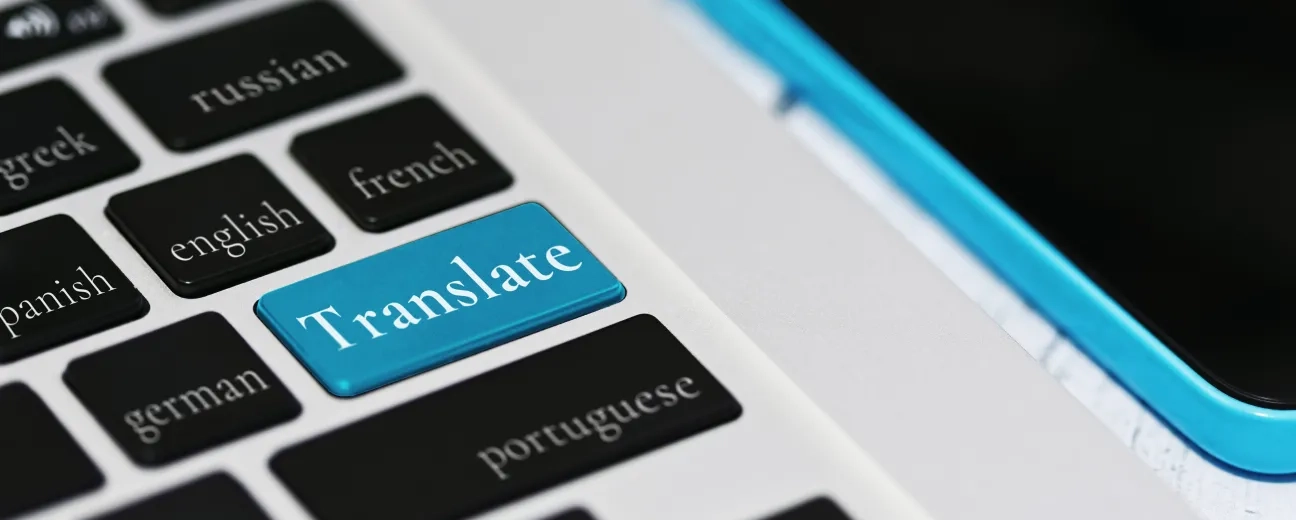
We’re excited to hear your project.
Let’s collaborate!

A website that speaks only one language in today’s world is a liability. Businesses no longer operate within borders. Digital landscapes stretch across continents, connecting cultures, economies, and people.
2025 will mark a turning point. Globalization accelerates. AI-driven translation reaches new heights. Consumer expectations shift. Any business, nonprofit, or entrepreneur failing to adapt will fall behind. Those who embrace multilingual web experiences will dominate.
This article covers:
Ready to start?
Website translation is not just for international expansion. Even local businesses need it.
The United States alone proves the point. Spanish, Chinese, and Portuguese speakers make up a massive share of the population. Ignoring them means ignoring growth. A U.K. brand using “chips” instead of “fries” may lose an American audience. South African users call traffic lights “robots.” These linguistic differences are more than quirks—they’re barriers.
“If you look at the U.S., you’ve got plenty of Spanish speakers, Chinese communities, and even Portuguese speakers from South America. So, even if you’re an e-commerce business without the infrastructure to ship to Europe, it doesn’t mean you should abandon the idea of a multilingual site,” said Dean Jones, Partnerships Marketing Manager at OnTheGoSystems.
Localization matters more than translation. Words shape perception. A phrase in one language may not carry the same power in another. Businesses that grasp this concept gain an edge.
Search engines reward relevance. Users search in their native language. A website locked in English forfeits visibility. The result? Lost traffic, lost engagement, lost revenue.
A simple example: A U.K. shopper looking for fries searches for “chips.” An American website that only uses “fries” loses that customer. This rule applies to every language, every region. Multilingual SEO is not an advantage—it’s a requirement.
“You can assume that if someone in the U.K. is looking for fries, they’ll search for ‘chips.’ If your website only uses the term ‘fries,’ you’re missing an opportunity. This applies across all languages and regions,” Jones explained.
Businesses that adapt rank higher, attract diverse audiences, and convert better. The competitive advantage is undeniable.
Machine translation has evolved. Google Translate, DeepL, and Microsoft Translator process text at unprecedented speeds. The accuracy? Impressive. The nuance? Lacking.
Businesses must strike a balance. Automation accelerates translation. Human oversight ensures precision. A hybrid approach—AI-assisted translation with expert review—delivers both speed and authenticity.
Jones highlighted the importance of a hybrid approach: “Automatic translation saves time and money, but it’s not perfect. You still need a human review process to ensure accuracy and proper localization.”
WPML and other multilingual plugins integrate AI-driven translations with human refinement. The result? Seamless multilingual experiences without the cost of traditional translation services.
A visitor should never struggle to understand a website. If they do, they leave.
Native-language navigation keeps users engaged. Trust grows when content feels familiar. Buying decisions happen faster. A multilingual site does more than translate words—it removes friction.
Currency conversion, local payment methods, and cultural adaptation amplify the effect. WooCommerce Multilingual and Multi-Currency allows e-commerce brands to display prices in a user’s currency. No confusion. No barriers.
Charities and nonprofits depend on connection. Language fuels that connection.
Organizations expanding their reach through multilingual websites see immediate impact. Donations increase. Awareness spreads. Global communities form.
“Expecting users to rely on Google Translate for your website isn’t a great experience. It’s like asking them to do extra work just to understand what you’re offering,” Jones noted.
A recent case study proves it. A nonprofit partnered with OnTheGoSystems to implement a multilingual platform. The result? A surge in donor engagement. Language access turns goodwill into action.
Another compelling example comes from the Allard Prize for International Integrity. As one of the most prestigious human rights awards, its website needed to be accessible to a global audience.
The challenge? Implementing a seamless translation system while optimizing the website’s performance.
With expertise in Drupal development and performance optimization, OPTASY took on the responsibility of not just improving the site's speed but also ensuring it could effectively serve a multilingual audience. Our team:
The result? A website that runs significantly faster, provides seamless multilingual access, and offers a vastly improved user experience for visitors worldwide.
Multilingual websites are not a passing trend. AI-powered voice search, real-time content adaptation, and hyper-personalized experiences will define the next decade. The businesses preparing now will own the future.
A website that speaks multiple languages does more than expand reach. It builds trust, enhances user experience, and secures long-term growth.
At OPTASY, we believe that multilingual websites are more than just a trend—they are a necessity in today’s globalized world. Our team understands the immense value of reaching diverse audiences in their native languages, and we help businesses, nonprofits, and entrepreneurs seamlessly implement multilingual functionality on their websites.
We take a structured approach to ensure your website delivers an outstanding multilingual experience. Here’s how our process works:
A monolingual website in 2025 is a relic of the past. The future belongs to those who speak the language of their audience—wherever they are.
Ready to dominate the global digital space? Contact OPTASY today.

We’re excited to hear your project.
Let’s collaborate!